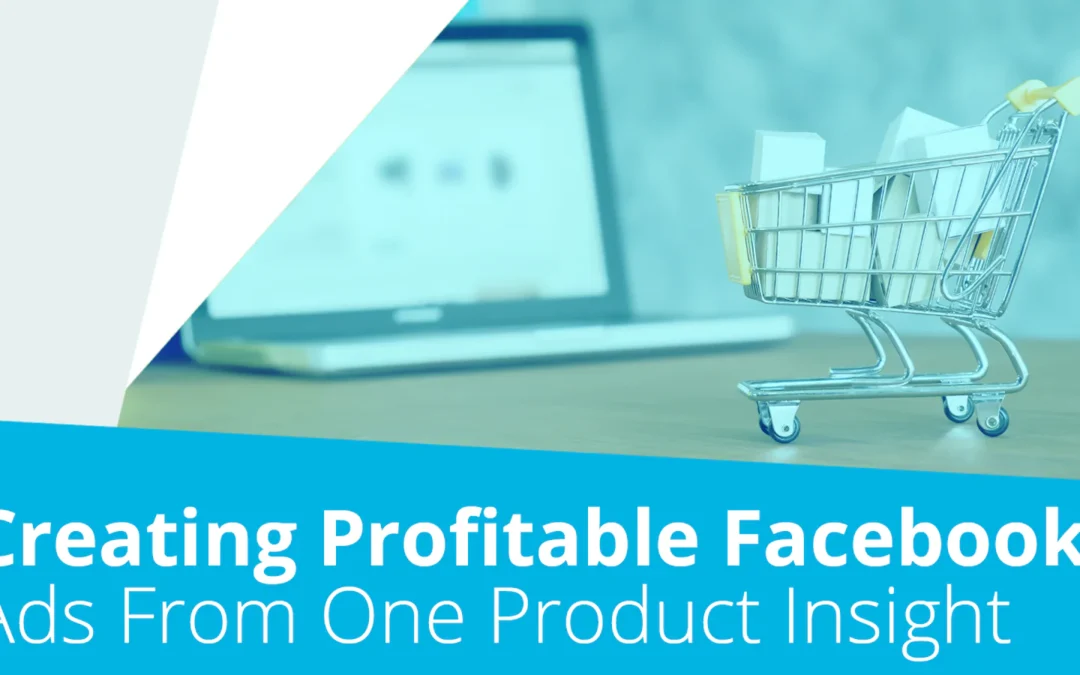When targeting a top of the funnel audience on Facebook, how do you get them to click on your ad? Do you know how to grab customers’ attention?
More importantly, how do you get them to take the next step and purchase?
The importance of serving relevant products to your customers is a hallmark of eCommerce success, because it requires a thorough understanding of your audience and their motivations. Being able to show off products that you know are more likely to convert is a big part of knowing how to scale Facebook ads in order to drive users to your store.
However, identifying those relevant ‘gateway products’ and getting them in front of the right people is actually deceptively simple. Here’s how to use the marketing data pipeline to do it.
Use Facebook Dynamic Ads to Personalize Your Social Advertising
Personalization is key in today’s world of advertising, and Facebook currently allows for a wide array of segmentation and targeting through Dynamic Ads.
Dynamic Ads are an ad format that allow you to re-target users who have taken an action on your website. They let you interchangeably serve them the products they’ve viewed, plus additional relevant products based on price, category, interests, and so on. For example, you could run Shopify Facebook ads and pull items from your Shopify catalog that people are likely to be interested or perhaps are on sale.
Dynamic Ads are great for remarketing campaigns, because Facebook’s algorithms can automatically serve up relevant items. However, when it comes to top of the funnel campaigns and finding new customers, determining what products to use in your paid promotions is not as straightforward.
One way to determine what products are most likely to entice new users to click through is by utilizing past purchasing data. Examining the cohorts of first-time buyers that converted best in the past can surface insights into what products will best engage new customers and what products these users are most likely to purchase first (note that the products that catch their eye are not always the ones they end up buying).
For example, if you’re an apparel company, would you be able to list which of your product categories are the most commonly purchased by new customers? Pants? Accessories? Sweaters? Customer acquisition data analytics can tell us.
If you aren’t sure what that product category would be, there’s a simple way to do customer product profitability analysis in Google Analytics:
- Navigate to Conversions > Product Performance
- Add User Type as a secondary dimension
- Conduct an advanced search for User Type containing “new visitor”

- Filter by quantity purchased
- Here, you will see the top products purchased by new users. (Google Analytics can collect behavioral data from website visitors, but these metrics in GA aren’t validated with your unit order data or individual campaign data, however. Your results should be taken with a grain of salt.)

Google Analytics can be a great resource for dipping your toes into data-driven eCommerce strategy. However, if you want to fully trust your data to make important marketing decisions, you’ll need a way to track 1:1 customer data, which GA cannot do.
Using a 1:1 customer data platform allows you to quickly and confidently find out what products make up the most frequent first time purchases from new users.
Gateway Products as Vital Data
At Tadpull, we use our Pond Software to make data-driven decisions within marketing campaigns. Pond pulls together data from Shopify, BigCommerce, SuiteCommerce, etc. with data from your marketing campaigns and your information about your site users to create a holistic view of the customer journey.
Aggregating this data to identify key metrics across users helps surface overall trends that can be applied and tested for efficacy in marketing campaigns across all of our digital channels.
One of those important metrics that we can access is gateway products: the items most commonly purchased by first-time customers.
If a large number of people bought specific products for their first purchase, these items will likely be more enticing to other new customers. Rather than randomly selecting products or assuming which items new users may like, gateway products are a concrete way to know the acquisition paths at the top of your customer funnel. Below, you can see an example screen taken from Pond that highlights multiple different product insights in addition to our gateway products.

There are a few more factors to take into consideration before selecting products for new customer acquisition ads, so here are our top 5 tips to consider.
Product Seasonality
As you can see in the image above, Pond allows users to toggle between different date ranges to view differing gateway product sets.
We’d recommend checking each of the different date ranges to make sure top products haven’t drastically changed in the last 30 days. If they have, consider why that might be the case (is there any aberration could be affecting selling patterns?) or think about using the newest batch of highest-acquisition products in your ads.
Keep seasonality in mind when selecting products regardless of their performance to assure that the top gateway items will still be relevant to the time of year you are promoting them in.
Customer Demographics
When looking at the top products, think about what demographic of people would most commonly purchase them. This will help you adjust your Facebook targeting during the ad campaign setup.
For example, does it make sense to split up your gateway products into male vs. female ads sets, or target a broad demographic? In Pond, this step is simplified by allowing sellers to examine customer cohorts based on their first purchase, highlighting any geographic and demographic trends that could inform your audience targeting selections.
Once you’ve selected your products, you’re ready to set up your campaigns on Facebook.
Inventory Insights
Make sure that the catalog item you’re promoting has a sufficient amount of inventory before running it in ads. If popular sizes and colours of these products are out of stock, it can create a frustrating user experience.
When people click on a clothing ad, for example, and see their size is out of stock, there is a high chance that the user will bounce. So we recommend choosing a category of inventory with sufficient stock in every size and colour to keep potential customers from lapsing.
Facebook Domain Ads
If you’re using more than one product per audience, you’ll want to use the ad type that calls for a single image, a video, or a carousel rather than opting for dynamic creative. By doing so, you can customize each ad for the individual product and test calling out different features and benefits of the products.
For example, if the gateway products you choose are a pair of boots and a jacket, you would promote them in two separate domain ads with different images and text.
For these ads, you are allowed to use multiple variations of primary text, headlines, and descriptions–the only element that is required to be consistent is the image/video you select.
Pro Tips:
- We love to test new creatives by duplicating the original ad and replacing the old image with lifestyle images, images with text overlay, user reviews, or slideshows.
- Keep your ad variations per ad set to no more than six, as this will help your ads deliver better. Using more than 6 ads in an ad set hinders Facebook’s ability to learn about your audience’s preferences and deliver better results. By keeping variations low, you’ll be able to learn about your audience behavior and campaign performance faster.
Facebook Dynamic Creative
If you choose to use just one product, use a dynamic creative ad type so you can test up to 10 different images or videos, five variations of primary text, and 5 headline options in one single ad.
This is the best way to filter out any ad creative that underperforms and hone in on top-performers.
Wondering how to run dynamic ads on Facebook?

To create this type of ad, toggle on “Dynamic Creative” at the ad set level. At the ad level, select your multiple videos, gifs, or images, and then list your primary text, headline, and description variations.
For more tips on building these ads, check out Facebook’s resource on dynamic creative best practices.
Facebook’s algorithm will then create multiple variations of the ad to show to different users based on what they’re likely to respond to. It can also seed out any low-performing copy or imagery.
Results-Powered Marketing
We’ve seen a huge lift in our clients’ results from utilizing this kind of product data out of Pond as compared to selecting random products to showcase in ads targeting broad lookalikes and/or new customer segments.
We optimized campaigns based on a few key metrics — including click-through rate, return on ad spend, and conversion rate — to illustrate the exact improvement caused by carefully selecting gateway products rather than guessing.
Check out our typical results below:
- Average Click-Through Rate = 5.26%
- Average Return On Ad Spend = 2,529%
- Average Conversion Rate = 7.35%
These results far outperform traditional ad setups – as an example, Facebook’s benchmark for a ‘good’ eCommerce ROAS is 400%. Our gateway campaigns perform nearly 6 times higher. How do your results compare? Now that you understand how to create profitable facebook ads, hopefully you’ll see the gateway product lift as well.
As you launch your gateway product campaigns, keep a close eye on how the different ad types are performing. Optimize your ads by testing new audiences, creative, or new gateway products as seasons change.
Low performing variants can be removed until you have a solid understanding of not only which products are the best for acquiring new customers, but what messaging and creative is the best as well.
If you’re interested in unlocking the analysis we use to pick the best gateway products for conversions, you can get in touch with us here or learn more about Pond here.
Image: freepik

